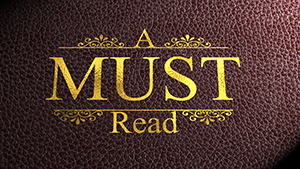Charles Dickens’: A Christmas Carol
 It’s December 22, and that means that Christmas is just around the corner! Given the season, it seems only fitting that I reread and review Charles Dickens’ classic tale of good will unto men, redemption, and seasonal poltergeists, A Christmas Carol. I won’t waste too much time on what the book is actually about, since just about everyone has seen an adaptation of the story at some point in their lifetime (be it on a stage or Looney Toons). Ebenezer Scrooge is a wealthy man who just can’t seem to find it in himself to give back to the less fortunate. In fact, Scrooge hates the prying “wishes of cheer” and expectations that come with the Christmas season. He knows how his life should work: he looks out for himself….and that is pretty much it. But Scrooge is in line for a rude awakening that just might scare him onto the straight an narrow. Like I said, you know the story. But do you know the book?
It’s December 22, and that means that Christmas is just around the corner! Given the season, it seems only fitting that I reread and review Charles Dickens’ classic tale of good will unto men, redemption, and seasonal poltergeists, A Christmas Carol. I won’t waste too much time on what the book is actually about, since just about everyone has seen an adaptation of the story at some point in their lifetime (be it on a stage or Looney Toons). Ebenezer Scrooge is a wealthy man who just can’t seem to find it in himself to give back to the less fortunate. In fact, Scrooge hates the prying “wishes of cheer” and expectations that come with the Christmas season. He knows how his life should work: he looks out for himself….and that is pretty much it. But Scrooge is in line for a rude awakening that just might scare him onto the straight an narrow. Like I said, you know the story. But do you know the book?
I have never been a huge fan of Dickens. I enjoy most of his work, but I never seem to see a particularly unique spark in his writing that I can’t find in many other high-profile writers. A Christmas Carol has swayed me the other direction. Although rather short (depending on the edition, roughly 120 pages), Dickens made me actually care about the characters. Don’t be fooled by much of the hype, though. Nobody here is very realistic. Scrooge is wretchedly crooked, Tiny Tim is gut-wrenchingly innocent, and everyone else fulfills their plotline obligations. That being said, I have to give Dickens a pass here. The book is heavily stylized in the characterization. Each character is a representation of a lifestyle, and, as such, they are wholly whatever that social phenomena is. The book manages to flow at a very pleasant pace, never feeling frantic, but not dragging its heels (it’s about 120 pages, after all). Ultimately, the Dickens secures this as a classic due to his use of the ghostly visions and overall message. If that seems common sense, bear with me. When we worry about a situation, we immediately think about the future. What will our actions cause? What about now? What do we not know? What about the past scenarios? How would we have acted differently if we could follow someone out of a room when they walk away? Scrooge is literally being haunted by the various elements of self-doubt and guilt. Dickens’ writing is concise and appropriate. The presentation of the narrative and overall lesson is simple, yet this simplicity is what makes it masterful and, more importantly, memorable. Add these together and you have a Christmas novel that has stood the test of time, and deserves its place as a classic. If Charles Dickens’ A Christmas Carol isn’t in you or your loved ones’ library, then this easily found little book would make a perfect Christmas present.











